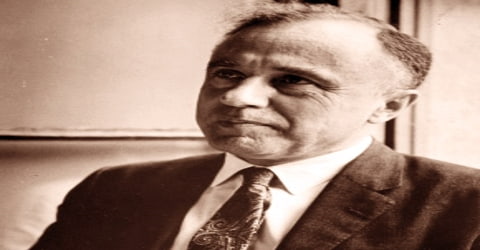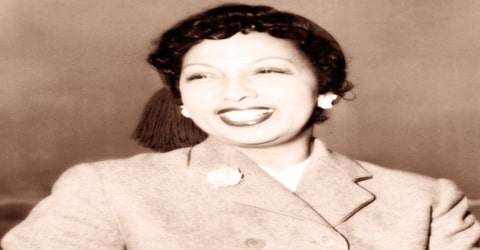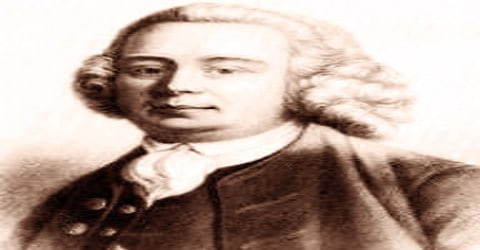Biography of John Archibald Wheeler
John Archibald Wheeler – American theoretical physicist.
Name: John Archibald Wheeler
Date of Birth: July 9, 1911
Place of Birth: Jacksonville, Florida, United States
Date of Death: April 13, 2008 (aged 96)
Place of Death: April 13, 2008 (aged 96)
Occupation: Physicist
Father: Joseph Lewis Wheeler
Mother: Mabel Archibald (Archie) Wheeler
Spouse/Ex: Janette Hegner (m. 1935-2007)
Children: Alison Wheeler Lahnston, James English Wheeler, Letitia Wheeler Ufford
Early Life

A physicist, the first American involved in the theoretical development of the atomic bomb, John Archibald Wheeler was born in Jacksonville, Florida on July 9, 1911, to librarians Joseph Lewis Wheeler and Mabel Archibald (Archie) Wheeler. He was largely responsible for reviving interest in general relativity in the United States after World War II. He is best known for linking the term “black hole” to objects with gravitational collapse already predicted early in the 20th century, for coining the terms “quantum foam”, “neutron moderator”, “wormhole” and “it from bit”, and for hypothesizing the “one-electron universe”.
Wheeler was one of the collaborators with none other than Elbert Einstein himself and he tried to achieve the vision of a unified field theory, which was proposed by Einstein. He was an American theoretical physicist who worked with Niels Bohr to explain the principles of nuclear fission. Together with Gregory Breit, Wheeler developed the concept of the Breit-Wheeler process.
Wheeler then began his four-decade-long association with Princeton University. It was at Princeton that he developed the concept of S-matrix, which holds good even today. Owing to his expertise in the process of nuclear fission he was inducted into Project Manhattan during WWII. He made a significant contribution to the development of a nuclear reactor as well as in the purification of Plutonium. After WWII he resumed his academic responsibilities and was involved in various other research work that included theoretical physics. He spearheaded the revival of theoretical physics and studied the time-space continuum and strived to establish a geometrical basis for a phenomenon like gravity. His efforts led to the inception of ‘Geometrodynamics’ and he even studied wormholes and black holes. In fact, he was the one to coin the term black hole.
For most of his career, Wheeler was a professor at Princeton University, which he joined in 1938, remaining until his retirement in 1976. At Princeton, he supervised 46 PhDs, more than any other professor in the Princeton physics department.
Childhood, Family and Educational Life

A renowned theoretical physicist from America, John Archibald Wheeler was born on July 9, 1911, to Joseph Lewis Wheeler and Mabel Archibald Wheeler in the city of Jacksonville, Florida, United States. Both his parents worked as librarians and he had three younger siblings Joseph, Robert, and Mary.
Wheeler attended a local school in Vermont where the family resided during 1921-22 and later studied at the ‘Rayen High School’ in Ohio. He then attended the ‘Baltimore City College’ from where he graduated in 1926. He received a scholarship to the ‘John Hopkins University’ sponsored by the state of Maryland. While working at the ‘National Bureau of Standards’ during the summer of 1930, he released his first scientific paper.
Wheeler earned his doctorate in 1933. His dissertation research work, carried out under the supervision of Karl Herzfeld, was on the “Theory of the Dispersion and Absorption of Helium”. He received a National Research Council fellowship, which he used to study under Gregory Breit at New York University in 1933 and 1934, and then in Copenhagen under Niels Bohr in 1934 and 1935. In a 1934 paper, Breit and Wheeler introduced the Breit–Wheeler process, a mechanism by which photons can be potentially transformed into the matter in the form of electron-positron pairs.
Personal Life
John Archibald Wheeler got married to Janette Hegner on June 10, 1935, after courting her for two years. Janette was a student of history at the ‘John Hopkins University’ and later took up teaching position at ‘Rye Country Day School’. They had three children: Letitia, James English, and Alison Wheeler.
Wheeler and Hegner were founding members of the Unitarian Church of Princeton, and she initiated the Friends of the Princeton Public Library. In their later years, Hegner accompanied him on sabbaticals in France, Los Alamos, New Mexico, the Netherlands, and Japan. Hegner died in October 2007 at the age of 99.
Career and Works
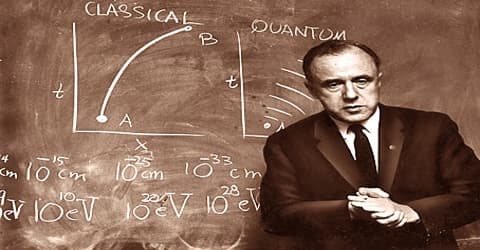
John Archibald Wheeler’s career in the academe began in 1935 at the University of North Carolina at Chapel Hill as an associate professor. Three years later he moved to Princeton University, initially as an assistant professor and he remained at Princeton until 1976. After his time in Princeton, he worked at the University of Texas for ten years until 1986, where he was the director of The Center for Theoretical Physics.
During 1934-35, he worked in collaboration with physicists Gregory Breit and Niels Bohr. It was in 1934 that Wheeler in collaboration with Breit discovered the mechanism by which light can be converted to matter. The process was named after its founders as the ‘Breit-Wheeler Process’ and marked the beginning of the latter’s scientific career. He then embarked on his first teaching assignment at the ‘University of North Carolina at Chapel Hill’, a public research university. As an assistant professor, he was offered an annual salary of $2300.
In 1937 Wheeler introduced what is now known as the S-Matrix, which is now an indispensable tool for the study of particle physics. He was also one of the proponents of nuclear fission alongside Enrico Fermi and Niels Bohr. Two years after he devised the S-Matrix, he worked on the liquid drop model used for nuclear fission together with Niels Bohr. Owing to his interest in particle physics, in the year 1938 he accepted the position of an associate professorship at the ‘Princeton University’. The same year he collaborated with theoretical physicist Edward Teller to investigate the liquid drop model of an atomic nucleus. They presented their results at a meeting of the American Physical Society in New York in 1938. Wheeler’s Chapel Hill graduate student Katharine Way also presented a paper, which she followed up in a subsequent article, detailing how the liquid drop model was unstable under certain conditions. Due to a limitation of the liquid drop model, they all missed the opportunity to predict nuclear fission. The news of Lise Meitner and Otto Frisch’s discovery of fission was brought to America by Bohr in 1939. Bohr told Leon Rosenfeld, who informed Wheeler.
Bohr and Wheeler set to work applying the liquid drop model to explain the mechanism of nuclear fission. As the experimental physicists studied fission, they uncovered puzzling results. George Placzek asked Bohr why uranium seemed to fission with both very fast and very slow neutrons. Walking to a meeting with Wheeler, Bohr had an insight that the fission at low energies was due to the uranium-235 isotope, while at high energies it was mainly due to the far more abundant uranium-238 isotope. They co-wrote two more papers on fission. Their first paper appeared in Physical Review on September 1, 1939, the day Germany invaded Poland, starting World War II in Europe. Considering the notion that positrons were electrons that were traveling backward in time, he came up in 1940 with his one-electron universe postulate: that there was in fact only one electron, bouncing back and forth in time. His graduate student, Richard Feynman, found this hard to believe, but the idea that positrons were electrons traveling backward in time intrigued him and Feynman incorporated the notion of the reversibility of time into his Feynman diagrams.
Wheeler was inducted into the ‘Manhattan Project’ in 1942 and he was a part of the ‘Metallurgical Laboratory’ that was in charge of developing the nuclear reactor. The findings of the research he undertook, with Robert F. Christy another theoretical physicist, were published in a paper ‘Chain Reaction of Pure Fissionable Materials in Solution’. He was then incorporated into the design department of ‘DuPont’, the chemical manufacture company, which was in charge of constructing the nuclear reactor as well a facility for purification of Plutonium. During 1943-44, he worked in close association with the engineers and even had to relocate a few times. He even pointed out a technical snag in the design of the reactor, which caused it to shut down.
In August 1945 Wheeler and his family returned to Princeton, where he resumed his academic career. Working with Feynman, he explored the possibility of physics with particles, but not fields, and carried out theoretical studies of the muon with Jayme Tiomno, resulting in a series of papers on the topic, including a 1949 paper in which Tiomno and Wheeler introduced the “Tiomno Triangle”, which related different forms of radioactive decay. He also suggested the use of muons as a nuclear probe. This paper, written and privately circulated in 1949 but not published until 1953, resulted in a series of measurements of the Chang radiation emitted by muons. Muons are a component of cosmic rays, and Wheeler became the founder and first director of Princeton’s Cosmic Rays Laboratory, which received a substantial grant of $375,000 from the Office of Naval Research in 1948. He received a Guggenheim Fellowship in 1946, which allowed him to spend the 1949-50 academic year in Paris.
Wheeler was then engaged at the ‘Los Alamos Laboratory’ which undertook the assignment to develop the Hydrogen Bomb. It was in 1951 that he established a division of the ‘Los Alamos Labs’ at Princeton through which he engaged students in projects involving nuclear weapons and nuclear energy as an alternative. Wheeler’s efforts bore fruits in 1953, when the ‘Matterhorn B’, a wing of ‘Project Matterhorn’ initiated by him in Princeton, successfully detonated the first thermonuclear device powered by nuclear fusion. Continuing his academic profession at Princeton, this eminent theoretical physicist began to study electromagnetism and gravitational force. He coined the term ‘geon’ to describe a wave, be it gravitational or electromagnetic in nature, that is confined in the field propagated by its own force of attraction.
In 1957 Wheeler introduced the term “wormhole” to the scientific community. He had been working on mathematical extensions concerning the Theory of General Relativity when he described the wormholes as “tunnels” in the space-time continuum. He worked on geometrodynamics, which was concerned with electromagnetism and gravitation, focusing on the geometrical properties of the curved space-time continuum. Since his research was aimed at identifying matter and space, it was thought that geometrodynamics was the continuation of philosophy (of nature) as the thought of by Spinoza and Descartes. However, the geometrodynamics idea of Wheeler was unable to explain some important observed physical phenomena such as why electrons, muons, and fermions exist. Because of this, he abandoned this theory in the 1970s.
Wheeler was also instrumental in reviving the branch of physics that dealt with Einstien’s general relativity. He described the passages in the space-time continuum as mentioned in Einstien’s theory as ‘wormholes’ and inferred by a further investigation that they are unstable. He pioneered ‘Geometrodynamics’, which strives to analyze the geometrical basis of all space-time phenomena, with its ultimate goal being the establishment of a unified field theory. From 1962-73, Wheeler published many books which accounted for the details of his research. ‘Geometrodynamics’, ‘Spacetime Physics’, ‘Scouting Black Holes’ and ‘Gravitation’ are some of the works he penned during this time.
Wheeler used the term black hole in 1967 when giving a talk at the NASA Goddard Institute of Space Studies. He was also a pioneer when it comes to quantum gravity, the “wave function of the universe.” Wheeler requested the American Association for the Advancement of Science (AAAS) in 1979 expel parapsychology, which he considered a pseudoscience. It had been admitted as a type of scientific field ten years earlier after Margaret Mead requested it. He said that he did not oppose the research which parapsychology does, but that it should have more convincing tests before being part of the AAAS. His request was not granted and parapsychology is still credited by the AAAS to this day.
In 1976 Wheeler was appointed a professor of physics at the University of Texas at Austin, where from 1979 he held the Ashbel Smith chair of physics and in 1981 became Blumberg Professor of Physics. Wheeler retired as professor emeritus in 1986. Wheeler helped develop the hydrogen bomb at Los Alamos, New Mexico (1949-51), and at Princeton, he was a director (1951-53) of Project Matterhorn, which was instituted to design thermonuclear weapons. For his work on nuclear fission and the technology of plutonium production, he was given the Fermi Award by the U.S. Atomic Energy Commission in 1968. From 1969 to 1976 he served as a member of the U.S. General Advisory Committee on Arms Control and Disarmament.
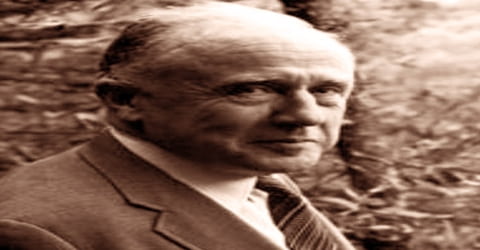
After a career spanning nearly four decades in Princeton, Wheeler retired in 1976. From 1976-1986, he remained at the ‘Center for Theoretical Physics’ affiliated to the ‘University of Texas’. During his tenure, he was involved with experiments that dealt with quantum physics.
In later years Wheeler turned his attention to the study of unified field theory, the space-time continuum, and gravitation. His books include Gravitation Theory and Gravitational Collapse (1965), Einstein’s Vision (1968), Frontiers of Time (1979), and Gravitation and Inertia (1995, with Ignazio Ciufolini), as well as a major textbook on Einstein’s theory of relativity, Gravitation (1973, with Charles W. Misner and Kip S. Thorne), and an autobiography, Geons, Black Holes, and Quantum Foam: A Life in Physics (1998, with Kenneth Ford).
Awards and Honor
John Archibald Wheeler won numerous prizes and awards, including the Enrico Fermi Award in 1968, the Franklin Medal in 1969, the Einstein Prize in 1969, and the National Medal of Science, by the President of United States in 1971.
Wheeler was also awarded the Niels Bohr International Gold Medal in 1982, the Oersted Medal in 1983, the J. Robert Oppenheimer Memorial Prize in 1984 and the Wolf Foundation Prize in 1997.
In 2003, Wheeler was awarded the ‘Einstein Prize’ by the ‘American Physical Society’ for his contribution in the field of gravitational physics.
Death and Legacy
John Archibald Wheeler breathed his last on April 13, 2008, in New Jersey, six months after his wife’s demise. He was suffering from pneumonia and was aged 96 at the time of his death.
Wheeler was renowned for making numerous contributions to the field of science but his work in the field of nuclear fission and fusion reaction is of paramount significance. He was involved in the making of first ever atom bomb and later the Hydrogen bomb. He was influential in mentoring a generation of physicists of the Golden Age of General Relativity, who made notable contributions to quantum mechanics and gravitation.
Wheeler was a member of the American Philosophical Society, the Royal Academy, the Accademia Nazionale dei Lincei, and the Century Association. He received honorary degrees from 18 different institutions. In 2001, Princeton used a $3 million gift to establish the John Archibald Wheeler/Battelle Professorship in Physics. After his death, the University of Texas named the John A. Wheeler Lecture Hall in his honor.
Information Source:
